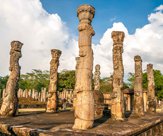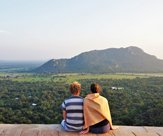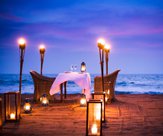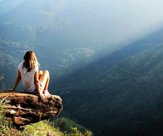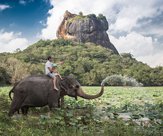Bak Poya (Bak Pura Pasaloswaka Poya Day) which falls in the month of April marks Lord Buddha’s visit to Nagadipa (Sinhala: නාගදීපය). This was his second visit to Sri Lanka after Enlightenment. According to the ancient chronicle, Mahavamsa, He visited Nagadipa as he perceived an atmosphere of animosity between two parties of the Naga community. The deity Samaddhisumana accompanied the Blessed One on this journey.
Lord Buddha’s visit to Sri Lanka
Gautama Buddha, in his fifth year of Enlightenment, landed in the island on a Bak Purapasalosvaka Full Moon Poya day. His intention was to put an end to the feud between two groups belonging to the Naga community and bring peace to the land.
One group was headed by King Mahodara, ruler of the Naga Kingdom. He had given his sister in marriage to the ruler of Kannavaddamane Mountain, and they had a son named Chulodara. He was the leader of the opposing party. It was a war between uncle and nephew, and they were fighting over a gem-studded throne Manipalaga, which had been given to Chulodara’s mother by her father.
The two warring parties were on the battlefield, when the Buddha hovered in mid-air above them by His divine power. Using this power he shrouded the entire area in darkness, then bathed it in a bright light. When members of the Naga tribe witnessed this miraculous act, they were overjoyed and worshipped the Buddha. He then related several folk tales or Jataka Katha in order to preach his message. These were the Kakoluka, Phandana, Latuka, and Wattaka Jataka Stories from the Pansiyapanas Jathaka Pothvahanse which put across a message of peace and harmony. In this way he was able to bring about harmony amongst the Naga people.
This historic event took place on the island of Nagadeepa or Nainathivu (நயினாதீவு) which is off the Jaffna peninsula’s coast in the northern province of Sri Lanka. At the very site where the Buddha preached his message of peace now stands the Nagadeepa Purana Rajamaha Viharaya. This Viharaya has two shrine rooms, of which the main shrine is constructed in the traditional Jaffna architectural style. The smaller shrine houses a Bronze Buddha statue gifted by the Burmese governnment, while an ancient Bodhi tree nearby spreads its branches in every direction.
The two warring Kings had offered the gem-studded throne to the Buddha after the feud was settled, as a token of their gratitude. The Buddha however, had courteously declined this gift. Thereafter, the Rajayathana Stupa, according to Buddhist history, was constructed with the throne enshrined within. This Stupa is painted in a silver colour, mainly as protection from the salty sea breeze.

